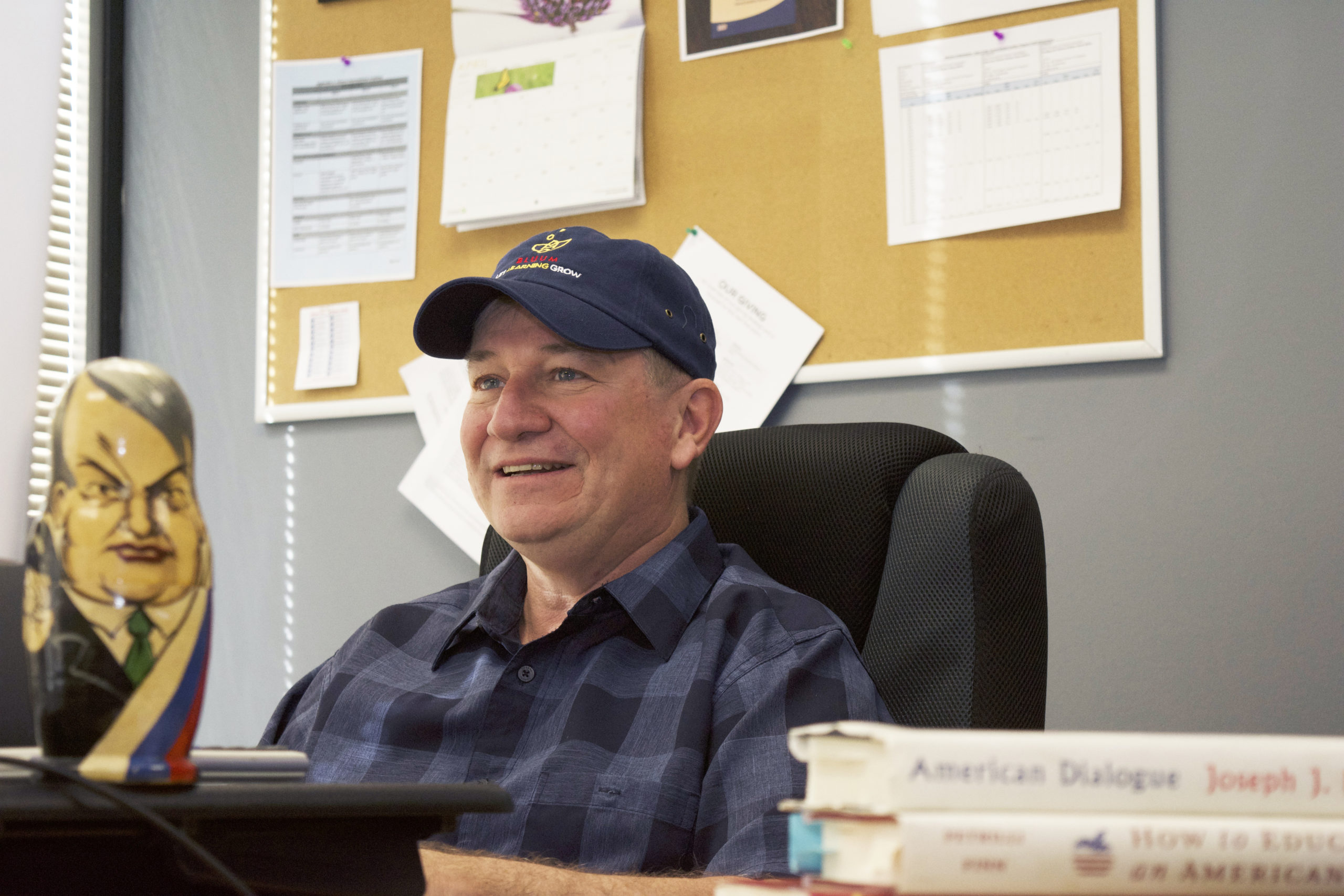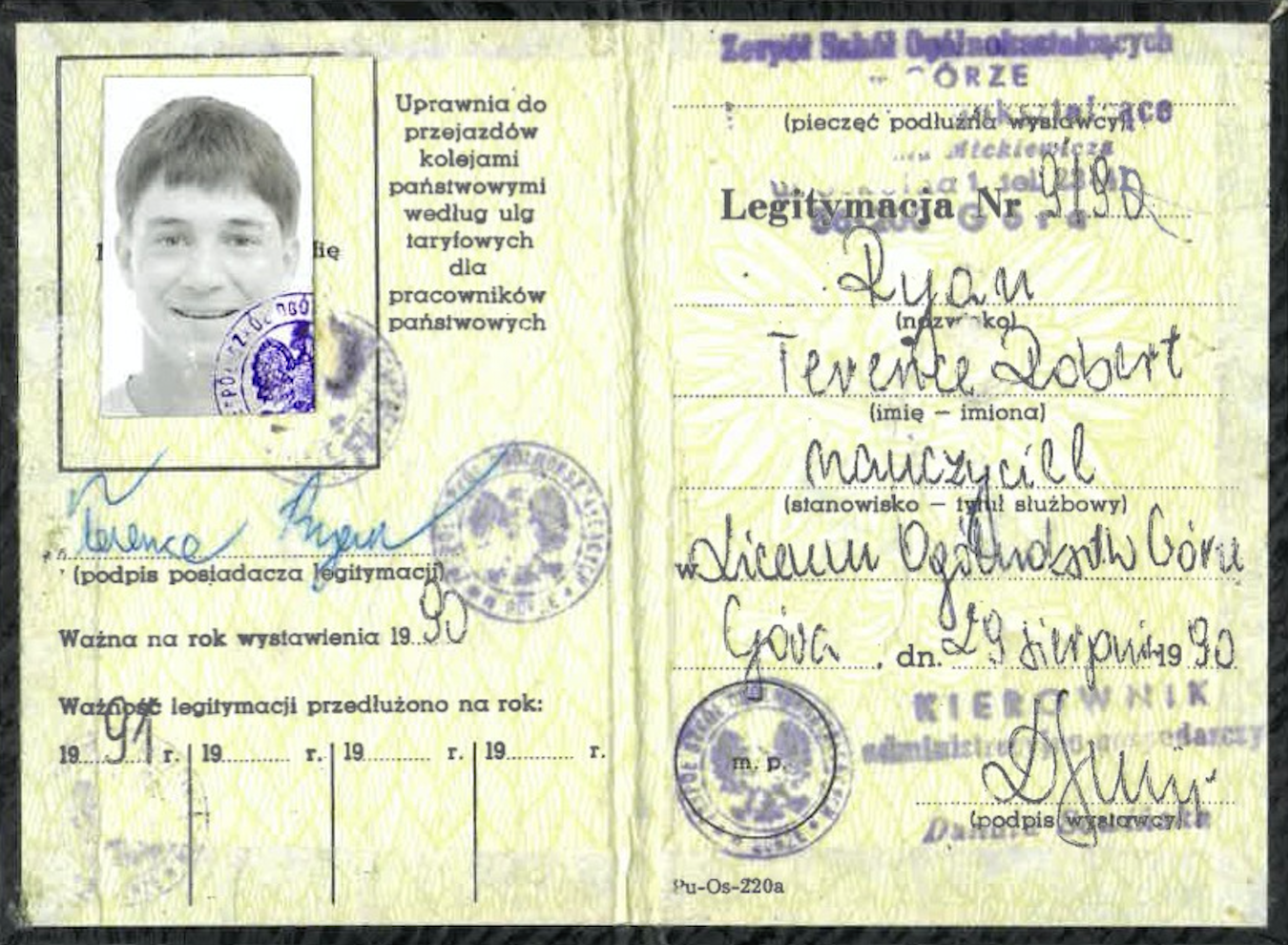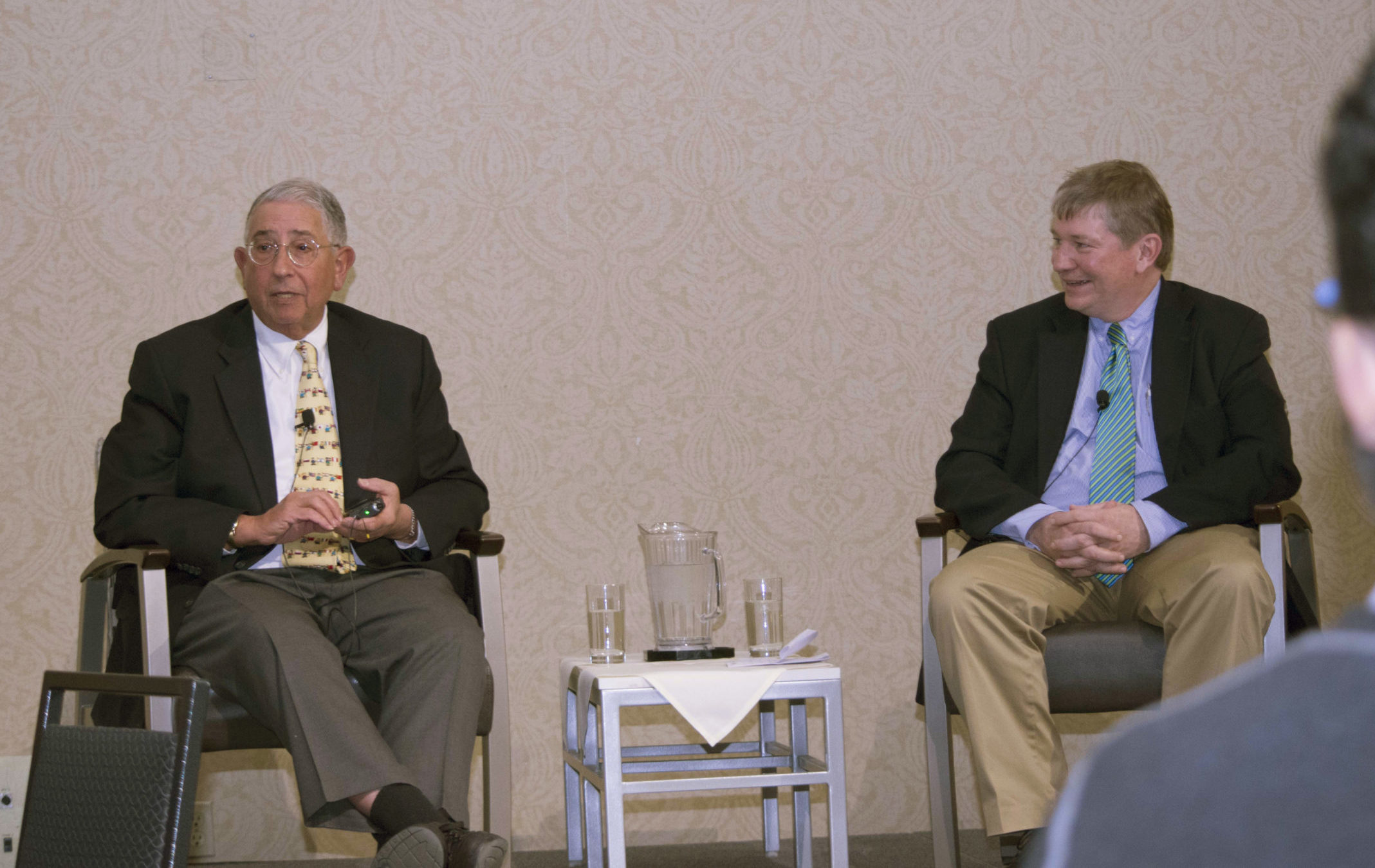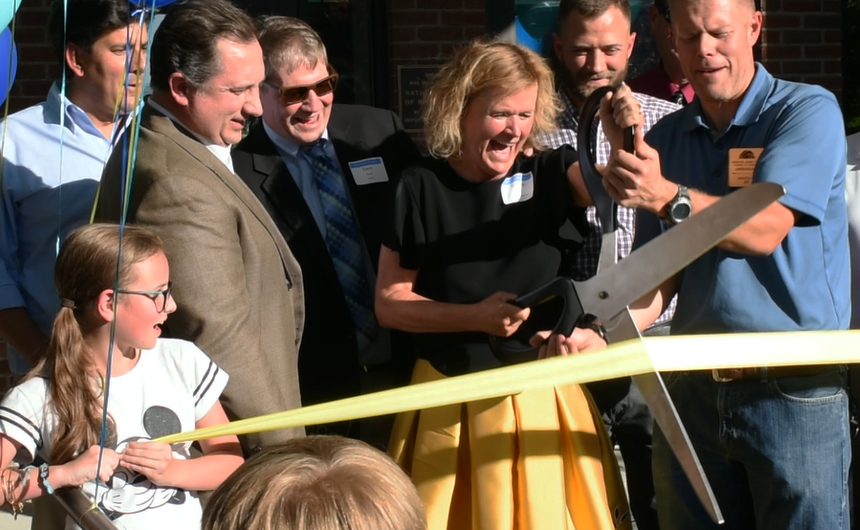
Terry Ryan’s quest to reshape public education in Idaho began 31 years ago, when the wide-eyed and inexperienced 22-year-old set off on a life-changing journey to Poland.
Ryan, a midwest Catholic kid with degrees in history and journalism, took a teaching fellowship in a small village in the country’s southwest region.
The experience exposed the struggles of a community beset by decades of communism and poverty. Meals with locals were often shared over dirt floors and chicken soup was a regular staple, Ryan recently recalled in his office overlooking Downtown Boise.
His worldwide journey put him on a path to disrupt traditional education in Ohio, and later Idaho, through a disputed push for charter schools.
Now in Boise, Ryan’s charter school support nonprofit Bluum has raked in some $50 million in federal and private grants to start up and grow charters in communities across Idaho — to the chagrin of critics who question the school choice movement.
He’s a controversial out-of-stater who’s made indelible marks on Idaho’s K-12 landscape by tapping into years of experience working with state and world leaders.
And he’s not finished.
“I believe in empowering parents to make decisions,” he said. “A parent who makes an affirmative choice about where their child goes to school has skin in the game that those who just show up, and don’t know why they’re there, don’t.”
An American in Poland
Ryan stepped off a train in Góra, Poland, for the first time in 1990.
A competitive fellowship had put the recent Eastern Illinois State University grad in an elite group of students from Harvard, Stanford and the University of Chicago — all chosen to teach overseas for a year.
Ryan, who taught English, scanned the sleepy village emerging from decades of Soviet rule. “Everything was gray,” he remembered.

With only a few months of language training, his Polish wasn’t much better than his students’ English. Still, Ryan relished the work.
“It was all about freedom, opportunity and redesigning education,” he said, drawing a connection between his year-long teaching assignment overseas and Bluum’s quest to grow charter schools in Idaho. “Those kids wanted to learn. They really wanted it.”
He returned home to Springfield, Ill., in 1991. But a fixation on Eastern Europe and a bent for travel had stuck. By 1994, Ryan was back in Poland as a graduate student surviving off a $15,000 grant from the Foundation for Education for Democracy to help Polish leaders get civics education into schools across Eastern Europe.
From Poland to Ohio
Ryan’s second stint in Poland connected him to his first mentor with geopolitical ties: Poland’s then-minister of education Wiktor Kulerski.
Steeped in the country’s struggles during World War II and through decades of Soviet rule that followed, Kulerski’s family clashed with the communist regime in post-war Poland. In 1951, his father, a former newspaper publisher and dissident, received a 12-year prison sentence for working on behalf of the American and British governments.
Kulerski’s history shaped his quest for a democratic Poland and inspired Ryan. “I think of him all the time,” Ryan said, “what to do, what to say.”
Ryan translated historic documents for study in Polish schools, including the Declaration of Independence and Federalist Papers. The experience also honed his grant-writing abilities, which helped him and Polish leaders expand their efforts into Ukraine and Lithuania.

Ryan also met his Polish wife, Emi, during his second tour of the region. The two returned to the United States in 1995 but soon resumed a heavy round of international travel after Ryan accepted a job assisting British educational researcher John Abbott — another mentor Ryan referred to as “one of the most impressive humans I’ve ever known.”
Ryan’s knack for getting grants helped Abbott push for changes to the way societies educate kids. Citing years of research the two had gathered on early learning, they held conferences and lobbied leaders from Washington, D.C., to Indonesia on the need to boost education funding and resources for kids aged 0-5.
“The science was sound, but our issues were institutional,” Ryan said, noting that governments tend to underspend on education during a child’s most formative early years.
Ryan and Abbott coauthored a book on their findings. But years of travel and uncertainty in the months after the Sept. 11 attacks prompted Ryan to return to the U.S.
With two daughters, Ryan’s focus turned to the heated issue of school choice in the Buckeye State.
From Ohio to Idaho
In 2001, Ryan took a job with the Thomas B. Fordham Institute, a conservative think tank focused on school choice, funding and accountability.
The family settled in Dayton as Ryan waded into a contentious Republican-led push to infuse competition into the state’s K-12 schools by expanding charters.
Charters were popping up across the state, but issues of corruption and ineptitude were apparent, he said. The institute hired Ryan to improve authorization and accountability efforts.
“It was, ‘Go there and figure out how to make this work better,’” Ryan said. “We had to protect the charter community from itself, to a degree.”
Part of the problem was finding reputable nonprofits willing to authorize, consult and, if necessary, close charters with poor student performance or bad spending practices.
Eventually, Ryan oversaw the institute’s role as an authorizer, with the goal of demonstrating how to do it right.
There were successes and failures. Ryan reflected on his decision to close an inner-city school that was struggling. “It was one of the hardest things I’ve ever done,” he said.
Yet Ryan also pointed to Fordham’s role in starting a KIPP school in Columbus, which serves only low-income students and operates on grant funding from global research giant Battelle to provide science and engineering coursework to inner-city kids.

The work connected Ryan to his third mentor, former United States assistant secretary of education and current Fordham President Emeritus Chester E. Finn. The two coauthored a book on educational reform challenges in Ohio, but years of heated battles over authorizing, closing and keeping charters in check took a toll on Ryan.
“He was occasionally working 12 hour days,” Emi Ryan said, adding that she worried how the work would impact her husband’s health longterm.
By 2014, Ryan had grown tired. Then, he received a call from a major K-12 education influencer in Idaho.
‘Building things is fun’
In 2014, Jamie Jo Scott, president of the J.A. and Kathryn Albertson Family Foundation, was searching for someone to lead the foundation’s “20 in 10” initiative, a lofty goal to infuse competition into Idaho’s K-12 system by adding 20,000 charter school seats in Idaho by 2024.
Ryan impressed Scott during a visit to Ohio.
“His reputation proceeded him as an expert on excellent and progressive policies and practice for increased quality in the school choice environment,” she said.
Scott flew the Ryans to Boise for a visit and offered a $300,000 grant to jumpstart the initiative.
A move to Idaho would mean familiarizing himself with a new K-12 landscape. Yet Emi Ryan pushed for the opportunity, citing long hours at Fordham and a love for the west the family developed after visiting the Grand Canyon and Utah years earlier.
Plus, the idea of a startup appealed to Ryan. “Building things is fun,” he said.
He accepted the offer and spent much of 2015 “figuring things out” amid criticism from some traditional educators, who balked at efforts to expand charter schools. In Idaho, public schools receive state funding based on the average daily attendance of their students. As charters grow, their share of state funding comes from traditional schools as they lose students.
For Ryan, that’s all part of the program. “I believe in competition,” he said, adding that both of his daughters graduated from Boise-based Sage International Charter School.
Other critiques over the years have ranged from an overall lack of diversity in Idaho’s charter schools to Ryan’s time in Ohio.
“Buckeye State charter school fraud coming to a charter school near you,” Caldwell special education teacher and blogger Levi Cavener wrote in a 2017 opinion piece, referencing what he called “the rampant corruption and ineptitude” in Ohio’s charter schools during Ryan’s tenure there.
Ryan responded by acknowledging the “tough” history of charters in Ohio but highlighted successes the Fordham Institute had along the way.
Ryan has also acknowledged issues of diversity in charters. A 2019 Stanford University study concluded that the average Idaho charter school student outperforms their traditional school counterparts. Yet like traditional schools, Idaho charter schools do little to close achievement gaps among various student subgroups, including Latinos, English language learners, students in poverty and those with disabilities.
Idaho’s charter schools also serve a higher percentage of white students than traditional schools, the report found.
The findings have prompted efforts from Bluum to address the problems. After the Stanford study, the nonprofit agreed to pay Boise State University $212,289 to track and analyze student achievement and demographic data at charter schools awarded a portion of federal grant funds dispersed by Bluum.
Ryan has also emerged as an ardent critic of charter schools that struggle — both in Ohio and Idaho. In 2019, he compared Idaho’s charter performance to the classic spaghetti western, “The Good, the Bad, and the Ugly.” The state’s virtual charters were largely responsible for the “ugly” part of the equation, he wrote.
In 2019, he argued that the state’s major charter authorizer should close failing brick-and-mortar charters — a view that garnered criticism from the Coalition of Idaho Charter School Families, which has emerged in recent years as a voice for charters that struggle academically.
Blistering growth
Despite lingering controversy, Bluum has overseen blistering growth in Idaho’s charter school sector since 2015 — even during the coronavirus pandemic, when traditional schools saw an enrollment decline.
From 2015 to 2020, the nonprofit helped the state add some 12,000 new charter school seats, with the help of $29 million from the Albertson Foundation and $13.5 million in federal grant funding.

Bluum has been instrumental in the often tedious work of starting schools, said Alturas International Academy principal Michelle Ball.
“It takes a village to create a strong educational community, and Bluum has contributed greatly to our journey,” she told EdNews.
Ball experienced the challenge firsthand in 2014. After quitting her teaching job at Idaho Falls-based Sunnyside Elementary, she set out homeschooling 24 students. Her classroom: spare space in the basement of the old courthouse in downtown Idaho Falls.
Ball eventually received state authorization for Alturas. But expanding to meet local demand was a struggle. While the state kicks in some extra funding for charter school facilities, the schools lack the taxing capabilities traditional school districts tap into for new construction.
Bluum’s partnership with Utah-based nonprofit Building Hope and a grant from the Albertson Foundation helped Ball secure funds and expertise needed to buy the historic O.E. Bell building near Downtown Idaho Falls, which allowed the school to expand for dozens of local families waiting to get in.
Ball credits Ryan for much of the school’s growth over the years.
“Terry’s wealth of knowledge, creative initiatives and expertise has supported and enhanced the academy’s foundation for supporting an innovative approach to education,” Ball said.
Disclosure: Bluum and Idaho Education News are both funded by the J.A. and Kathryn Albertson Family Foundation. The foundation does not influence EdNews’ editorial decisions or content.
